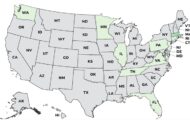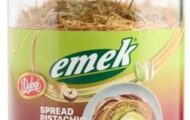Tainted dog food is the source of a Salmonella Infantis outbreak that has sickened 14 people in nine states, five with infections so severe they required hospitalization, according to the Centers for Disease Control and Prevention (CDC).
 Over the last week, Diamond Pet Foods has recalled nine brands of dog food due to possible contamination with Salmonella. And five other brands: Natural Balance, Kirkland Signature, Wellpet Solid Gold Health Products, and Apex, have issued related recalls.
Over the last week, Diamond Pet Foods has recalled nine brands of dog food due to possible contamination with Salmonella. And five other brands: Natural Balance, Kirkland Signature, Wellpet Solid Gold Health Products, and Apex, have issued related recalls.
So, how does dog food make people sick?
To find out, Food Poisoning Bulletin talked with Jeff Bender, professor of veterinary public health at the University of Minnesota. Bender is also Director of Animal Health and Food Safety and hospital epidemiologist.
“These kinds of outbreaks are increasingly being detected,” said Bender, citing recent human illness outbreaks related to dog treats. “In many cases, it’s only the humans who get sick and the human illness outbreak is the tipoff that something may be wrong with the pet food.”
Dogs can contract salmonellosis, the infection the Salmonella bacteria produces. And if they do, they may exhibit the same symptoms a human would including fever and bloody diarrhea. “But more often than not, a dog with a case of salmonellosis won’t show any signs at all,” Bender said. And that’s not a problem.
In these situations, people shouldn’t fear or avoid contact with their pets, said Bender. Touching, petting or playing with Fido isn’t going to make you sick, even if he’s showing signs of illness. “The problem is going to be in the poop,” Bender said. “That’s why hand washing is so important.”
Good hand washing is the best way to prevent the two ways that people are most likely to get sick from tainted dog food, Bender said. The first is to handle the dog food, then prepare (human) food, eat a meal or touch your mouth without first washing your hands. The second way is to pick up after your dog (scoop poop) and then prepare (human) food, eat a meal or touch your mouth without first washing, or adequately washing, your hands.
Generally, it’s the second scenario that poses the biggest problem, said Bender. “It gets to a question of dose. Which of these ways allows for the most Salmonella to enter the human body?”




